
What is the reality of the development of agriculture in Kazakhstan in the context of the global crisis? What support tools are offered to agricultural producers by the state, and most importantly, whether agro-science can help in the development of agriculture? To these and other pressing issues in the field of agriculture in an interview with World of NAN Galiya Akimbekova, Acting Director General of the KazNII of Agribusiness Economics and Rural Development.
Galiya Uysimbekovna, agriculture is called the backbone of the economy of the country. Please tell us about the main sectors of agriculture in Kazakhstan?
- The agriculture of our country includes two branches - plant growing and animal breeding, which are divided into independent branches: grain growing, vegetable growing, horticulture, cattle-breeding, pig breeding, and so on. All of them differ in types of products, technology, organization of production, and systems of machinery. At the same time, large industries are divided into small ones, for example, cattle breeding includes cattle breeding, which is also divided into dairy and beef cattle breeding, breeding young cattle, etc.
And what is the stage of development of agriculture now? What has become the key factor of growth or decline in the industry?
- It should be noted that the agricultural sector of Kazakhstan has always been considered a basic component of the national economy. The basis of this position is a number of advantages, which the Republic possesses - availability of huge territory (by area of arable land per capita Kazakhstan takes the leading place in the world), being in the number of large exporters of grain and flour, growing demand for food products from neighboring countries (China, Central Asia, EAEC and CIS).
As far as the situation in the agro-industrial complex is concerned, I would like to emphasize that at present high rates of development of agriculture of the republic are observed. If we talk in numbers, gross output for 2010-2019 years has increased by 3.2 times, the value of manufactured food products has increased by 2.3 times. The share of agriculture in the structure of the country's GDP by the end of 2019 is 4.4%. Gross output of only agriculture in 2019 was 5.2 trillion tenge, of which crop production - 2.8 trillion tenge (54.7%), livestock - 2.3 trillion tenge (45.3%).
According to the results of ten months of the current year the gross output of agriculture, forestry and fishery was 5.4 trillion tenge, which is 5.2% higher than the level of the corresponding period of the previous year. The growth of production volume in the industry was caused by the increase of crop production by 7.1%, volumes of slaughter of livestock and poultry in live weight by 3.7%, milk yield of raw cow milk by 3.1%.
The significant growth in production was due to the expansion of resources used - land, livestock, capacities of enterprises, as well as the increase of the level of productivity of their use. For example, sown areas over the past five years (2015-2019) have expanded by 5%, while it should be emphasized that there is a diversification of grain crops, the share of wheat decreases (from 85.4% to 74%), the share of barley (from 8 to 12.4%), corn (from 0.6 to 1.1%), legumes (from 0.5 to 1.4%) increases. Cultivation of oil-bearing crops, mainly sunflower, is slowing down, but the production of oilseed flax is growing rapidly.
In general, it can be noted that in crop production there is a wide group of industries, the production of which is growing rapidly. Among them are pulses, sugar beets, rice, cotton, rapeseed, safflower, grapes, fruits and berries. If high rates of leguminous plants production were due to the expansion of the area, the significant role in the production of sugar beet and rapeseed was played by the growth of crop yield.
Livestock farming is also developing dynamically, with the exception of pig breeding. The main acceleration was observed in 2015-2019, when the average annual growth rate rose from 0.7 to 3.2%. Cattle, horses, and poultry showed the largest increase in the number of cattle. Due to an increase in the number of cows, milk production is also growing.
The accelerated development of poultry production was influenced by two factors - the growth of livestock and the volume of ready meat output.
Is it correct to talk about the influence of geographical features on agricultural production and productivity of the regions in terms of agribusiness?
- Undoubtedly, the peculiarities of the area affect productivity. They determine the specialization of agriculture in one or another area of the country. Currently, there are zones with a certain specialization of agricultural production with regional peculiarities.
On average, in each region there are two or three specialized zones with a spread from one (desert) in Mangistau region to five zones in Turkestan region and seven (steppe, dry-steppe, semi-desert, desert pre-mountain-desert-steppe, Central Asian and South Siberian mountain) in East-Kazakhstan region.
The forest-steppe zone in Kazakhstan occupies a small area with the most productive and sustainable agricultural production. Specialization here is aimed at the development of grain and dairy production, potato farming, production of oilseeds. It should be noted that the specialization of the steppe zone has differences by region. If in Akmola region there is a specialization on grain, in Aktobe region - grain and cattle breeding, and in the Eastern Kazakhstan region - grain and oilseeds. Therefore, different specializations are formed in different regions of this zone, but the basis is still a grain economy.
In the dry steppe cattle-breeding and grain specialization zone is formed. Conditions of this zone are most favorable for the production of livestock products, including beef cattle. There are also regional differences in this zone. Thus, in Akmola region specialization has a grain-cattle breeding direction, in East Kazakhstan region horse breeding is added, and in West Kazakhstan region - sheep breeding.
Cattle-breeding specialization is formed in semi-desert zone. Different types of farm animals are bred here, and partial production of rice and melon crops is placed. The latter difference is characteristic only for Kyzylorda region.
The desert zone also has a livestock specialization, but the main type of animals here are sheep. It is not without regional differences. If in Karaganda region, along with sheep, beef cattle and horses are raised, in Mangistau region - mainly sheep and camels.
Kyzylorda region also hosts the main rice crops. This zone, where the natural potential dictates the need for agroformations to specialize in sheep, camel and horse breeding. Although under certain conditions (drip irrigation) some agricultural crops (fodder crops, vegetables, etc.) can be grown here as well.
In Almaty region the specialization is geared to beet growing, vegetable growing, dairy cattle and poultry farming, in Zhambyl region it is grain and potato growing specialization. In Turkestan region it is already only cattle and sheep breeding, and in Eastern Kazakhstan - horse breeding and oilseed production.
It should be noted that in Turkestan region, subtropical foothill-desert zone allows to cultivate cotton (95.7% of its gross production is located here), as well as vegetables, melons, fruits and grapes. In addition, only here in the republic tobacco is cultivated.
In general, specialization opens up great opportunities for further improving the use of labor resources in the countryside. Therefore, in the future it is advisable to use the scheme of specialization of agricultural production as a base, on the basis of which large-scale zones of production of certain types of agricultural products should be formed.
Galiya Uysimbekovna, how is the situation with provision of the domestic market with food?
- Agriculture to a large extent provides food security of the country. However, in addition to meeting the needs of the population of the republic, there is an overproduction of certain types of goods: flour, eggs, some cereals, potatoes, vegetable oil. Consequently, along with supplying the domestic market, we have the opportunity to export part of the products.
The Republic is self-sufficient in all major types of resources - land, labor, etc. With optimal organization and support, Kazakhstan is able to provide the population of the country with the main types of food on a full scale, not forgetting to take an active part in interstate trade.
In your opinion, which sectors of the agro-industrial complex should be developed at the present time?
- Despite the leading position in the export of grain, good performance in the supply of flour and grain industry products and oilseeds, there is a deficit in the domestic market for certain products. Specifically, the demand for fruit and poultry is not covered by the agricultural products. Having significant resources of wheat and flour, imports of pasta into the country exceed a certain threshold. The share of imports is also high for sausages, dairy products, vegetable oil, sugar, and it is especially high for fish products and canned fruits and vegetables.
The main branch in crop production is grain farming. Grain production of 18-20 million tons, which is produced in the country, is enough for domestic consumption. Annual export here is 5.5-7.5 million tons, but the potential of grain farming could be much higher.
In order to increase grain production, increase export, provide animals with more fodder, and increase the volume of processed products it is necessary to increase significantly the yield and quality of wheat, increasing the gluten content to 28-32% in the main areas of cultivation, which will raise the competitiveness of the industry to the world level.
In solution of above mentioned tasks one of the most important measures which contribute to increase of efficiency of grain production is realization of innovative projects, in particular introduction of new perspective, adapted to local conditions varieties of grain crops. As practice shows, due to new varieties and high quality seeds, grain crop yield increase can reach 20-25% and more.
Galiya Uysimbekovna, what other issues would you name as urgent in the sphere of agricultural sector?
- At the moment one of the main tasks of the Government of Kazakhstan is to increase the competitiveness of agriculture as one of the key drivers of the national economy. To date, Kazakhstan is implementing the State Program for the Development of the Agro-industrial Complex of the Republic of Kazakhstan for 2017-2021, which pays great attention to the support of agrarians.
Assessing the current situation, we can identify areas to which special attention should be paid. So, for further qualitative development of agriculture it is necessary to increase the level of productivity through the replacement of obsolete machinery and equipment, the introduction of modern resource-saving technologies. In addition, it is necessary to continue working to improve living conditions (infrastructure, housing and utilities, benefits, etc.) in rural areas in order to attract young promising professionals to work in the agricultural sector.
Special attention should also be paid to the formation of mutually beneficial economic relations and strengthening of integration processes between agricultural, processing, servicing and trade-selling enterprises of agro-industrial complex in order to reduce the cost of transportation of produced products and its losses.
One of the major problems of the sector, which requires an immediate solution, is small-scale agricultural production due to the high share of private subsidiary farms. Today the main producers of milk and meat are small household farms, which often do not have the financial means to buy seeds, fertilizers, fodder, machinery and other means of production, which leads to the low quality of products produced and the low competitiveness of domestic products compared to imported ones.
This problem can be solved by uniting small farms into agricultural cooperatives for marketing, storage and primary processing of agricultural products. At the beginning it is possible to create marketing cooperatives in order to accumulate agricultural products obtained by household farms by directly subsidizing the creation of such structures.
The next stage could be the organization of production cooperatives of household farms. It is necessary to bring the activities of household farms into the regulated legal field, giving them the status of small businesses, encouraging them by measures of the WTO "green basket", for example, subsidizing the opening of businesses, the financing of start-up projects, etc.
For effective use of land plots and development of land relations, it is necessary to involve pastures from reserve lands into agricultural turnover, with restoration and construction of new watering facilities. Undoubtedly, in crisis conditions their development is impossible without measures of state support. Therefore, now it is proposed to develop a program of pastures watering and their rational use, providing step-by-step development: up to 2030 - 20 mln ha, 2031-2040 - 30 mln ha, 2041-2050 - 40 mln ha.
Could you tell us about the instruments of support for farmers by the country's leadership?
- Today the measures of state regulation and support of the subjects of agro-industrial complex are carried out within the framework of certain state programs. At the same time, the agricultural producers themselves believe that the most effective measure is soft lending. Most often it is the lack of financial resources and high interest rates on credits that is one of the main factors that restrain the entrepreneurs. And almost all subjects of agrarian production need concessional financing of various forms.
The plan of measures for realization of state programs includes the increase of availability of financing for subjects of agrarian and industrial complex and provision of optimal regimes of taxation. So, apart from other measures of state support, there are 20 types of subsidies in agro-industrial complex totaling 1.71 trillion tenge for five years. Including by years: 2017 - 246.6 billion tenge, 2018 - 262.9 billion tenge, 2019 - 279.3 billion tenge, 2020 - 385.6 billion tenge, 2021 - 534.1 billion tenge. There is an increase in the volume of subsidies.
Subsidies in the agro-industrial complex are to a greater extent carried out through financial instruments. Thus, over the first three years of the implementation of the state program, the proportion of subsidies aimed at crop production was 23.7% of the total amount of subsidies in the agro-industrial complex. In livestock farming this indicator was 31.6%, in fish farming - 0.1%, in processing - 1.6%.
The dominant specific weight (43%) belongs to subsidies on financial instruments. The established structure of subsidizing is explained by the policy of gradual abandonment of commodity-specific measures of state support of subjects of agro-industrial complex in favor of financial instruments of impact on the development of the industry. A high proportion of subsidies in the cattle-breeding sector is accounted for by the policy undertaken to develop the export potential of beef cattle breeding, the need for import substitution in the dairy industry, and the measures taken to improve the livestock structure.
Soft loans are provided to agricultural enterprises by subsidiaries of KazAgro JSC. The total volume of loans issued by subsidiaries of "KazAgro" at the end of the third quarter of this year amounted to 701.4 billion tenge - which is 24.5% more than in the same period last year. The share of small and medium-sized businesses among the borrowers of the holding is more than 87%. Taking into account that the biggest part of borrowers in agriculture are small enterprises, we may say, that the holding plays a key role in financing of agribusiness and supporting small and medium businesses in the sector.
Galiya Uysimbekovna, you are the head of the scientific center. How do you think agro-science can help in the development of various types of agriculture? What should be the basis for innovation activities in the agroindustrial complex? What are the real examples of implementation of scientific developments in agriculture?
- It is rightly pointed out that an important issue, which influences both the productivity in agriculture and the food security of the country, is the close interaction between agro-science and the business community. At the present stage the most important factor of effective development of agrarian production is transition to innovative model, the basis of which is technical and technological re-equipment of the branch. Introduction of innovations in all spheres of agroindustrial complex will contribute to increase of efficiency, competitiveness, productivity, increase of production volumes. In this regard we can confidently say that scientific know-how is already helping to solve certain issues in agriculture.
The technical and technological and production model of innovation is the most common today - digitalization and new elements of production technology are actively used in crop production, livestock farming, product processing, etc.
One of the elements in the development of innovative digital solutions for automation of agriculture in Kazakhstan is the introduction of drones in the agricultural sector to monitor the condition and use of agricultural land. These vehicles in many areas of the country, especially in the northern region, allow for timely mapping of farmland and analysis of the vegetation index NDVI, monitoring of weed infestation, analysis of soil heterogeneity and disease development, crop control, mapping and more.
Chipping and fencing of pastures are widely used in meat cattle breeding, i.e. implementation of so called "electronic shepherd" is in progress. In addition, automatic drinkers with heating in winter, electronic scales, etc. are used.
In dairy complexes are used milking machines with special control programs which allow to take into account individual milk yield, give necessary portion of forage. Also, robotic milking stations are introduced in dairy farms of Almaty region and integration with IAS system is made. Milk yield data is directly integrated into the electronic system.
The developing breeding and genetic innovation model, which involves the creation of new varieties of plants, new breeds of animals, disease and pest control agents, is also worth noting.
What forecast can you make about the potential of agriculture for the next 5-10 years?
- As I noted at the beginning of our conversation, agriculture is developing at a fairly high rate. At the same time, the analysis of the development potential showed that today the sector of agricultural products processing is underdeveloped. This, in its turn, restrains the increase of competitiveness of the final products of the agro-industrial complex and the export potential of its branches.
Specialized enterprises producing foodstuffs are slowing down the growth of their capacities, with the exception of those producing ready-made fodder, and unrefined and refined vegetable oil (production capacities show growth, compensating for the decline in 2010-2015).
The achieved level of development of the processing industry does not correspond to the potential and opportunities that Kazakhstan has to increase the output of food products. It is necessary to focus on the expansion of production facilities, which can potentially produce more profit, as well as to reduce systemic risks.
According to our forecasts, in the future we expect a slight increase in the sown area (+3.5%), but the share of grain crops will fall to 67%, wheat to 49%. The share of forage, grain, cereals and leguminous crops will grow - up to 29%. Growth of sugar beets sowing is forecast up to 30 thousand hectares, and stabilization of areas under oilseeds due to reduction of flax sowing at the level of 1.1 million hectares.
Potato and vegetable and melon crops are projected to increase by 1%, as the current level of production significantly exceeds demand.
It is proposed to considerably expand forage crops - by 22%.
The growth rate of livestock and poultry is projected at a higher level (up to 15.3 million heads by 2030), as well as the demand for livestock products.
High growth rates of crop yields and animal productivity are expected.
Calculations have shown that the mechanical transfer of the accumulated rate of development of the industry over the past ten years requires a logical adjustment. For example, consumption of bakery products by the population of the country is growing and exceeds the norm determined by the Ministry of National Economy of the RK by 25%. At the same time, there was a tendency of grain crops reduction from 16,6 to 15,4 mln. ha. That is, there were multidirectional trends. If they will be kept, then ensuring of full satisfaction of domestic grain demand will be possible at the expense of decreasing of export volumes.
Therefore, it is proposed to slow down some development trends and accelerate others. For example, to reduce the growth of consumption of bread and sugar, to accelerate the growth of consumption of vegetables and melons, potatoes, meat and milk, while maintaining the downward trend in demand for vegetable oil and fats.
Overall, adjustments in agricultural development would lead to more rational food consumption by the country's population. Given the change in demand for food, both due to consumption norms and growth in the population (up to 22 million people), and increased productive consumption, including fodder, the balance capacity of domestic and foreign markets will change.
At the same time, a significant reduction of import revenues is predicted. For example, imports of cereals may decrease from 416 (2019) to 150 thousand tons by 2030, vegetables and melons - from 371 to 150 thousand tons, meat - from 205 to 100 thousand tons, milk - from 456 to 120 thousand tons, etc.
In general, we expect that the saturation of the market with domestically produced products will increase.






































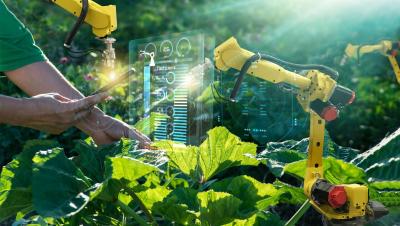
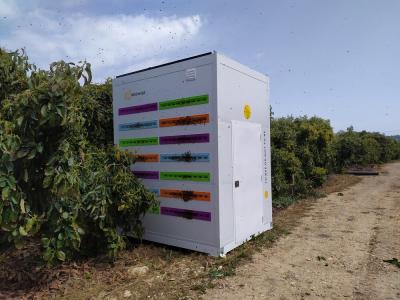
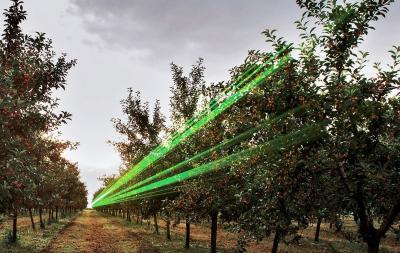
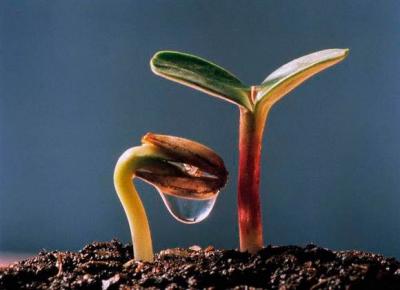
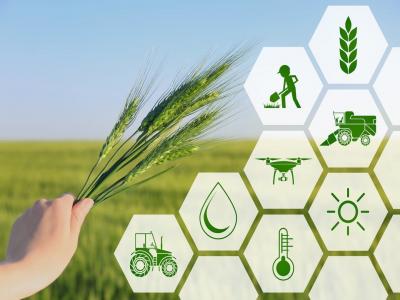



Обсуждение